Univ VIII Project CSU.edited
docx
keyboard_arrow_up
School
Columbia Southern University *
*We aren’t endorsed by this school
Course
6053
Subject
Business
Date
Jan 9, 2024
Type
docx
Pages
13
Uploaded by nikitawallacecsu
Running head: Case Analysis of Uber
1
Unit VIII Journal
MBA 6053 Economics for Managers
Jamel Latrell Xavier III
Professor James Halstead
September 22, 2020
Running head: Case Analysis of Uber
2
Table of Contents
Introduction
................................................................................................................................
3
Market Before Uber and its Exploited Inefficiency
...................................................................
3
Uber’s Surge Pricing and Shifts in Supply and Demand
...........................................................
5
Uber’s Surge Pricing and Price Discrimination
.........................................................................
6
Uber Business Model and Economic Concepts
.........................................................................
7
Economies of Scale
....................................................................................................................
7
Economies of Scope
...................................................................................................................
8
Game Theory to Uber’s Market
.................................................................................................
8
Uber’s Potential for International Expansion and Potential Trade Policy Issues
......................
9
Incentive Pay Model of Uber and its Influence on Principal-Agent Issue
.................................
9
Asymmetric Information Complexity with Uber’s Business Model
.......................................
10
Conclusion
................................................................................................................................
10
References
................................................................................................................................
12
Running head: Case Analysis of Uber
3
Case Analysis of Uber Introduction
Advanced innovation creates a massive disruption in various sectors by transforming traditional processes into contemporary ones to attain sustainability and profit maximization in the competition. Further, globalization and Industry 4.0 are the other factors that increase the demand for innovative business practices to avail excessive opportunities for the global business environment (Cramer & Krueger, 2016). By overviewing the importance of disruptive technology, Uber executes GPS technology in the ride-sharing business fthat completely advances the transportation industry. Because of the particular change in the industry, Uber intensely contends with the local juggernauts in transportation while obtaining
success while offering ad hoc opportunities to millions of drivers all over the globe (Dudley, Banister & Schwanen, 2017). The following practices are used by Uber as part of their business model, price surge, price discrimination, game theory, trade expansion, economies of scale, incentive pay model and economies of scope models in the business (Cramer & Krueger, 2016). Uber’s questionable credibility in the transportation sector will continue to be in question. The following information and research expounds the essential concepts of economics for understanding the role of Ubers processes and its organizational performance.
Market before Uber and its Exploited Inefficiency
Uber’s path of ruin, began during the inception of their business while losing gross profits during the first nine years of the company’s initial inception. While other corporation’s utilized traditional methods and business practices. Uber investors never expected their returns would come from industry utilizes traditional business practices, which
is less reliable for customers because of no convenience and accessibility of taxis on the fingertip. However, Uber pursued a growth at all costs strategy financed by a stunning $20
Your preview ends here
Eager to read complete document? Join bartleby learn and gain access to the full version
- Access to all documents
- Unlimited textbook solutions
- 24/7 expert homework help
Running head: Case Analysis of Uber
4
billion in funding by its investors. When introducing the concept of shared-economy that delivers substantial value to riders and consumers it was found to be appealing to the masses. Uber’s massive subsides were unequivocally anticompetitive and unsustainable- but they made the company enormously popular as mentioned when passengers enjoyed not having to pay the full cost of their service. Majority of the criticism concerning Uber was focused on the narrow behavioural and cultural issues, including deceptive advertising and pricing, algorithmic manipulation, driver exploitation, deep-seated misogyny among executive’s, and disregard of laws and business norms ("Uber’s path of destruction," 2019).
Uber’s long game planned to eradicate all definitive completion and then profit from its innovation by way of power in numbers. Uber, in a short amount of time had become internet and social media famous, not achieving Facebook and or Amazon powered platforms yet very close. Like so many start-up companies Uber’s investors agreed to go public with the company, in hopes of exploiting the masses of gullible investors in order to generate enough revenue with its current popularity based of the popularity efficient innovations attracting investors who do
not care about the inability to generate profits. Eventually, false narratives created the beliefs that Uber’s corporate value was sound and reasonable making it attractive to the tech world, media and investment groups. And out of thin air the belief’s surrounding Uber lead to it being considered the most valuable transportation company on the planet and the second most valuable start-up IPO in U.S. history only to Facebook ("Uber’s path of destruction," 2019)
. The narrative created by Uber was simply its way of bending public perception on how new and massive company could create a false narrative types of manufactured employment. This was probably the largest representation of their strength, meaning the false and constructive narrative. Yet in reality, Uber’s platform wasn’t a ground-breaking technologically advanced
Running head: Case Analysis of Uber
5
breakthrough, nor has Uber unsettled the traditional urban car services. The respective business model exploits riders with moving targets to maintain the supply of Uber drivers, which is considered as the coercive tactic to manipulate riders with psychological tricks.
Uber exploited the idea that competitive consumer and capital markets will maximize overall economic welfare by rewarding companies with superior efficiency. Like so many other companies with multibillion dollar subsidies, Uber completely distorted marketplace price and service signals, leading to a massive misallocation of resources. Uber never created wealth for the consumer, workers, it’s cites being serviced or anyone else outside of its own private wealth and financial growth. Uber’s, proposed agenda was to exploit the offerings of work flexibility, autonomy, command and free enterprise while enjoying producing your own uncapped income. The other factors that contribute to utilizing inefficient practices include the use of drive-
passenger association system, promotion of the labour-supply model in the transport sector, inefficient taxi regulations and improved market share for Uber (Cramer & Krueger, 2016). Because of the inefficiency in taxi regulations no power is given to the riders to take advantage of the available information and choose the rides accordingly, which can lead towards misleading practice due to limited control over drivers (Dudley, Banister & Schwanen, 2017). This opened the door for Uber to change the transportation sector with innovation and exploiting inefficient regulations that need to be resolved to deliver unusual services for customers as well.
Uber’s Surge Pricing and Shifts in Supply and Demand
Economists like to use Uber as the embodiment of a functioning supply-and-demand economy. When David Sacks the CEO and founder of Yammer tweeted a sketch of Uber’s network effect. He put simply and elegantly, network effect is the phenomenon in which a
Running head: Case Analysis of Uber
6
product or service gains more value the more people use it. A network effect is only as good as the levels of participations from both sides of the supply chain: the product or service and the people who use that product or service (Lee, n.d.). With the evaluation of Cramer and Krueger (2016) research, surge pricing is one of the substantial principles of Uber to manage the balance between supply and demands of riding facilities. Uber’s surge pricing, specifically, which leverages the concept of supply and demand. As stated by Uber “When demand for rids outstrips the supply of cars, surge pricing kicks in, increasing price. While the numbers of people needing a ride increases the number of available drivers come closer together, decreasing the wait time for consumers. Uber’s intentions are to maximize the number of customers and drivers to support the customers’ needs regardless of any contrived or natural occurrence regardless of any roadblocks. Ubers, surge pricing algorithm is still under lock and key and many R&D companies have unsuccessfully attempted to reverse engineer it. Uber, uses a rolling code system where its surge prices are recalculated every five
minutes. What is known is that Uber’s surge pricing is similar to that of hotels and airline pricing aligning with peak travel times. Uber appeals to all customers’ immediate gratification making its ride-hailing application so successful. Surge pricing still exists and it’s the same as dynamic pricing. Uber switched from surge to dynamic to upfront pricing only to return back to surge pricing. The reason why surge pricing still occurs is due to supply and demand. Uber, knows its customers and they will continue to use its app, despite and mediocre or lopsided press. The most valuable assets are the drivers and their ability to support the ride-hailing application no matter the time of day. Uber’s Surge Pricing and Price Discrimination
Uber has a strategic and substantial advantage over opponents due to its invention and
strategic tactics. Because surge pricing and price discrimination are the two key methods as to how the company generates revenue. Ubers pricing discrimination creates multiple lines of
Your preview ends here
Eager to read complete document? Join bartleby learn and gain access to the full version
- Access to all documents
- Unlimited textbook solutions
- 24/7 expert homework help
Running head: Case Analysis of Uber
7
service that perform the same functions. This allows Uber to service large income range. Making price discrimination specific to individual Uber cars. From the Uber-X, Uber-Lux, Uber-SELECT, Uber-BLACK and Uber-SUV it allows Uber to price discriminate on five different levels. Price discrimination occurs when a firm sells a good or service to different buyers at two or more different amounts (Schneider, 2017).
Some conditions for price discrimination are a result of supply, the prevention of re-
sale from one consumer to another and lastly a difference between price elasticities within different markets for Ubers product. Uber has successfully been able to control all of the aforementioned conditions. Uber, banks on people paying more is a car is really nice (Agarwal, 2017). Uber will charge various customers different amounts based on the locations, peak-time and dissimilar facilities or vehicles choice.
Uber Business Model and Economic Concepts
Uber’s business model is no longer just the on-demand cab hailing service as it was originally known to be. Uber has expanded to Uber Eats and Uber Freights and somewhat dipping their toes in to areas outside of ridesharing. Ubers adoption of the shared-economy business model that excessively depends on the automated system or digital aggregator app platform to connect passengers in need of a ride from one point to another. Uber, has disrupted the taxi/cab industry by being cost effect and cheap. Uber’s value proposition for passenger’s stems from convenience, for drivers is stems from flexibility. From the highest echelon, Uber makes its money by taking a portion of the profits or fare from each ride its drivers perform. This happens regardless if the ride is shared or individual ("Uber business model explained: From start to finish," 2020)
. Economies of Scale
Uber’s claims on a regular basis that economies of scale for drivers - takes advantage of the economies of scale by reducing the cost of the business and earning more benefits from
Running head: Case Analysis of Uber
8
the available resources and strong strategic performance. Steamrolling over the competition of local taxi companies all over the world. Uber was able to produce an image of inevitability
and invincibility. Uber presented itself as the tech firm that primarily based on the automated systems and proposing the shared platform to riders and customers for the mutual benefit. Uber also kept its inconsistent financial disclosures combined with a relentless public-
relations campaign depicting Uber as a digital start-up. However, studies quickly showed that
Uber was not on the same path of success as aligned by other organizations such as Facebook
and Amazon (Schneider, 2017). Economies of Scope
Economies of scope states the average total cost of a company’s production decreases when there is an increasing variety of goods produced. Ubers way of advancement within the business character and sustainability can be accomplished by providing a variety of services and products to target the more noteworthy areas within the market. This is accomplished by fulfilling their requirements within the respective products. When focusing on the economies of scope, Uber’s case pointedly adopts this economic concept to build its value in the fleet industry by offering vibrant amenities with different automobile accommodations to target different classes of people within their customer base. While exploring other segments as well as including the Uber Eats and Uber Freight to create the pitch differently. Uber has appropriately provided some stabilization within the business world nationally by providing categorical opportunities to individual’s phenomenal assistance. Game Theory to Uber’s Market
Because of so many competitors within the ride share industry, Uber needs to focus on the game theory to modify its business strategies and innovation for being distinct from the other similar companies such as Lyft that offers approximately the same service in the transportation sector. In economics, there are four different types of duopolies that depend on
Running head: Case Analysis of Uber
9
the price, quantity and game theory price-setting. Because both Lyft and Uber engage in essentially competitive markets by mimicking each other’s business model. When overlooking the both models Uber and Lyft, and how Uber acts as a duopoly in the continental US and how they compete with each other based on their prices, products, facilities, organizational sustainability and cost-effectiveness. Both are almost mirror twins with similar deals, both firms apply game theory to attract investors for funding benefits that exceptionally reduce the business cost and generate more income than the other rivals.
Uber’s Potential for International Expansion and Potential Trade Policy Issues
Uber has optimized its business model as to how Uber allows the firm to expand internationally expanding to 63 countries. Abroad regulations are tighter and provide almost total control the performance and activities of riders also humiliate some of the labour policies that hinder the potential of Uber to expand internationally. Because international expansion with Uber is so tough it requires so much more to manoeuvre abroad. Because Uber considers each driver a contractor and not a full time employee it has also caused problems both national and internationally as well. This issue varies from countries to countries depending on the complexity of the system. Incentive Pay Model of Uber and its Influence on Principal-Agent Issue
Over time Uber has considered offering gratuities to its drivers by including tips and receipts as a common practice for its customers and drivers. Even with the executives of Uber
discouraging the gratuities alongside the driver’s income. The principal agent problem has always been brought to the implements an incentive pay model for riders to generate income as per their performance, but the high-income targets are inefficient for some drivers because of the principal-agent problem. Uber faces their principal-agent issue due to the conflicting interest between the rider and employers, in which the workers desire to achieve more
Your preview ends here
Eager to read complete document? Join bartleby learn and gain access to the full version
- Access to all documents
- Unlimited textbook solutions
- 24/7 expert homework help
Running head: Case Analysis of Uber
10
benefits with limited efforts, whereas the employer aims to reduce the cost of the process (Scheiber, 2017). Asymmetric Information Complexity with Uber’s Business Model
Uber urges benefits to both sides of the supply chain with its shared-economy model; therefore, augmenting on its benefits and flaws are identified in the respective segment, including the issues with power and information asymmetry. Ubers business model as a company offers unequal paybacks to the riders with its malleable occupation due to the provision of digital and algorithmically information system to workers that enhance their power and information to make decisions for ride locations. Asymmetric information can be grouped into two main categories of information for passengers. With this consideration, the management focuses on developing regulations to control the information and rider’s practices for eliminating the complications of information asymmetries. Additionally, highlighting the labour model of Uber, the company provides freedom, entrepreneurship facilities and flexibility to riders that escalate authority among riders. Along with it, the customer management optimization promotes communication between the passenger and rider that further leads to information mismanagement. Conclusion
This article focuses on why Uber information asymmetry influences the partnership relationship between drivers and economy. This report determines that Uber evolution in the transportation industry by adopting the shared-economy model and the automation of its fleet
management system with GPS and smartphone application to provide benefits on both sides of the supply chain; riders and passengers. Unfortunately with Ubers exploited inefficiencies in their business model that gives more power to riders that further creates asymmetric information complications. When providing value to Ubers strategy implements the economies of scale and economies of scope concept by adopting digitalization and presenting
Running head: Case Analysis of Uber
11
various facilities other than transportation such as Uber eats and Uber freight services. Uber expressively provides stability between supply and demand with surge pricing that is further executed in the price discrimination model of the company. Lastly, Game theory is used by Uber in order to maintain an economical advantage by limiting the expansion issues related to
trade policies.
Running head: Case Analysis of Uber
12
References
Agarwal, P. (2017, August 18). Uber price discrimination strategy
. Intelligent Economist. https://www.intelligenteconomist.com/uber-price-discrimination-strategy/
Cramer, J., & Krueger, A. B. (2016). Disruptive change in the taxi business: The case of Uber.
American Economic Review
,
106
(5), 177-82. http://doi.org/10.1257/aer.p20161002
Dudley, G., Banister, D., & Schwanen, T. (2017). The rise of Uber and regulating the disruptive innovator.
The political quarterly
,
88
(3), 492-499. http://doi.org/10.1111/1467-923x.12373
Lee, J. (n.d.). How Uber leverages supply and demand in their pricing model. Learning Hub | G2. https://learn.g2.com/uber-supply-demand
Pendergrass, W. S. (2019). Game Theory Through Smartphone App Use in Support of for-
Hire Transportation Network Companies. In
Proceedings of the Conference on Information Systems Applied Research ISSN
(Vol. 2167, p. 1508). http://proc.conisar.org/2019/pdf/5230.pdf
Rosenblatt, A., & Stark, L. (2015). Uber’s drivers: Information asymmetries and control in dynamic work.
Available at SSRN
,
2686227
. https://algorithmsatwork.files.wordpress.com/2016/02/rosenblat-stark-information-
asymmetries-and-control-in-dynamic-work-cscw-2016.pdf
Scheiber, N. (2017). How Uber uses psychological tricks to push its drivers’ buttons.
The New York Times
,
2
. https://www.getabstract.com/en/summary/how-uber-uses-
psychological-tricks-to-push-its-drivers-buttons/29783
Schneider, H. (2017).
Creative destruction and the sharing economy: Uber as disruptive innovation
. Edward Elgar Publishing.
Your preview ends here
Eager to read complete document? Join bartleby learn and gain access to the full version
- Access to all documents
- Unlimited textbook solutions
- 24/7 expert homework help
Running head: Case Analysis of Uber
13
Uber business model explained: From start to finish
. (2020, March 11). Mobisoft Infotech. https://mobisoftinfotech.com/resources/blog/uber-business-
model-explained/
Uber’s path of destruction
. (2019, May 20). American Affairs Journal. https://americanaffairsjournal.org/2019/05/ubers-path-of-destruction/
Zakrzewski, C. (2019). The Technology 202: This is why Uber’s global expansion poses risks as it goes public. 1 June 2020, from https://www.washingtonpost.com/news/powerpost/paloma/the-technology-
202/2019/05/10/the-technology-202-this-is-why-uber-s-global-expansion-poses-risks-
as-it-goes-public/5cd49dcfa7a0a4376091595f/
Related Documents
Recommended textbooks for you
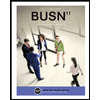
BUSN 11 Introduction to Business Student Edition
Business
ISBN:9781337407137
Author:Kelly
Publisher:Cengage Learning
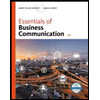
Essentials of Business Communication (MindTap Cou...
Business
ISBN:9781337386494
Author:Mary Ellen Guffey, Dana Loewy
Publisher:Cengage Learning
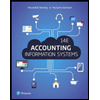
Accounting Information Systems (14th Edition)
Business
ISBN:9780134474021
Author:Marshall B. Romney, Paul J. Steinbart
Publisher:PEARSON
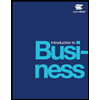
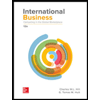
International Business: Competing in the Global M...
Business
ISBN:9781259929441
Author:Charles W. L. Hill Dr, G. Tomas M. Hult
Publisher:McGraw-Hill Education

Recommended textbooks for you
 BUSN 11 Introduction to Business Student EditionBusinessISBN:9781337407137Author:KellyPublisher:Cengage Learning
BUSN 11 Introduction to Business Student EditionBusinessISBN:9781337407137Author:KellyPublisher:Cengage Learning Essentials of Business Communication (MindTap Cou...BusinessISBN:9781337386494Author:Mary Ellen Guffey, Dana LoewyPublisher:Cengage Learning
Essentials of Business Communication (MindTap Cou...BusinessISBN:9781337386494Author:Mary Ellen Guffey, Dana LoewyPublisher:Cengage Learning Accounting Information Systems (14th Edition)BusinessISBN:9780134474021Author:Marshall B. Romney, Paul J. SteinbartPublisher:PEARSON
Accounting Information Systems (14th Edition)BusinessISBN:9780134474021Author:Marshall B. Romney, Paul J. SteinbartPublisher:PEARSON
 International Business: Competing in the Global M...BusinessISBN:9781259929441Author:Charles W. L. Hill Dr, G. Tomas M. HultPublisher:McGraw-Hill Education
International Business: Competing in the Global M...BusinessISBN:9781259929441Author:Charles W. L. Hill Dr, G. Tomas M. HultPublisher:McGraw-Hill Education

BUSN 11 Introduction to Business Student Edition
Business
ISBN:9781337407137
Author:Kelly
Publisher:Cengage Learning

Essentials of Business Communication (MindTap Cou...
Business
ISBN:9781337386494
Author:Mary Ellen Guffey, Dana Loewy
Publisher:Cengage Learning

Accounting Information Systems (14th Edition)
Business
ISBN:9780134474021
Author:Marshall B. Romney, Paul J. Steinbart
Publisher:PEARSON


International Business: Competing in the Global M...
Business
ISBN:9781259929441
Author:Charles W. L. Hill Dr, G. Tomas M. Hult
Publisher:McGraw-Hill Education
